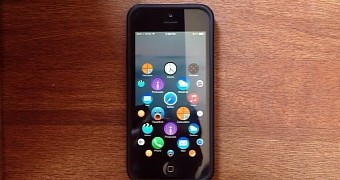In early 2015, Apple will be releasing its hotly anticipated watch product, the first new thing out of the Cupertino company in years. It comes with a fresh underlying OS inspired by the iPhone operating system but tailored for the wrist.
Apple Watch uses a modified version of iOS that boasts rounded iconography and an at-a-glance navigation system of the apps built inside the device. Owners will use both touch and the digital crown to navigate through the entire OS.
Putting the Apple Watch OS on an iPhone
Inspired by an article depicting the Apple Watch software on the iPhone’s home screen, Lucas Menge has decided to go the extra mile and actually make it happen beyond pretty pictures. So he coded up a prototype OS for the iPhone inspired by the Apple Watch OS.
Menge explains on YouTube, “I thought the designs shown looked pretty, and the GIF he posted showing interaction with the real Apple Watch home screen made me notice a lot of tiny little details on it, so I decided to give a try at programming it over the past couple of days in my free time.” The result is the video embedded below.
The clip shows how one can easily navigate the apps on an iPhone using simple taps and swipes, without having to go through multiple pages or screens. The concept puts all the apps on a single canvas with the ability to zoom in on it until each app becomes accessible.
How would it work?
The navigation system works like turning around an invisible sphere with the app icons floating atop of it (or making it up would be another way of putting it).
The system wouldn’t be without its drawbacks, of course. As the creator explains, you’d need to tap outside an icon’s space to zoom out, which could make for a lot of accidental zoom-outs, as you can imagine.
Another drawback would be managing the apps. While the concept looks cool, it makes for a poor smartphone OS. There’s a reason why apps stay on different screens, in folders, etc. But we can see users getting accustomed to such a system nonetheless.
Apple probably doesn’t plan to do this with the iPhone or the iPad, and there’s a good chance they’ve already tested this possibility in their labs. But it’s interesting to look at nonetheless. So what do you guys think? Would you like to use your iPhone like this?

 14 DAY TRIAL //
14 DAY TRIAL // 